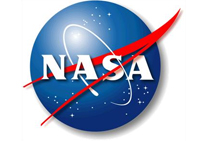NASA Langley Technology Transfer Opportunity: Zone Zeroing Out Negative Effects Biofeedback Training for Optimal Athletic Performance

Synopsis – Nov 08, 2011
General Information
Solicitation Number: N/A Reference Number: TTO0944 Posted Date: Nov 08, 2011 FedBizOpps Posted Date: Nov 08, 2011 Recovery and Reinvestment Act Action: No Original Response Date: Jun 01, 2012 Current Response Date: Jun 01, 2012 Classification Code: 99 — Miscellaneous NAICS Code: 927110 – Space Research and Technology Set-Aside Code:
Contracting Office Address
NASA/Langley Research Center, Mail Stop 12, Industry Assistance Office, Hampton, VA 23681-0001
Description
NASA Langley Research Center in Hampton, VA solicits interest from companies interested in obtaining license rights to commercialize, manufacture and market the following technology. License rights may be issued on an exclusive or nonexclusive basis and may include specific fields of use.
THE TECHNOLOGY:
NASA Langley researchers have developed an extensive technology portfolio on novel methods for effective dispersion of carbon nanotubes (CNTs) in polymers. The technology portfolio extends from making stable dispersions of CNTs in polymer resins to processes for making composite CNT/polymer films and articles. The technologies apply to a range of polymer types, enable low or high CNT loadings as needed, and can be used with a variety of standard polymer processing methods, including melt processing. Currently, the technology is being used commercially for electrically conductive polymer films for components in electronic printers and copiers.
The technology portfolio spans several methods for dispersion and processing of CNTs in polymer resins and composites. CNT/resin systems with high dispersion and long-term stability are provided by three general approaches. One method relies on mechanical dispersion by sonication simultaneous with partial polymerization to increase the resin viscosity to maintain dispersion and enable further polymer processing of the CNT blend into films and other articles. Another approach relies on what is termed “donor acceptor” bonding, which essentially is a dipole bond created on the CNT/resin interface to maintain dispersion and stability of the CNT/resin blend. This dispersion method also provides advantages in mechanical properties of processed composites due to the interface characteristics. A range of polymer types can be used, including polymethyl methacrylate, polyimide, polyethylene, and others.
An additional dry blending approach provides advantages for a variety of thermoplastic and thermoset systems. Use of ball mill mixing achieves effective blending and dispersion of the CNT, even at high loadings. Further processing steps using injection molding or similar melt processing methods have yielded CNT/polymer composites with a range of useful electronic, optical, and mechanical properties.
To express interest in this opportunity, please respond to Sean Sullivan at: NASA Langley Research Center, 17 West Taylor St., Mail Stop 218, Building 1212, Room 110 Hampton, Virginia, E-mail: Sean.D.Sullivan@NASA.gov, or phone: 757-864-5055. Please indicate the date and title of the FBO notice and include your company and contact information.
Contracting Office Address: NASA Langley Research Center 17 West Taylor Street, Mail Stop 218 Building 1212, Room 110 Hampton, VA 23689-2199
Primary Point of Contact: Sean Sullivan NASA Langley Research Center Sean.D.Sullivan@NASA.gov Phone: 757-864-5055
Point of Contact
Name: Sean Sullivan Title: Media Specialist Phone: 757-864-5055 Fax: 757-864-8101 Email: sean.d.sullivan@nasa.gov








